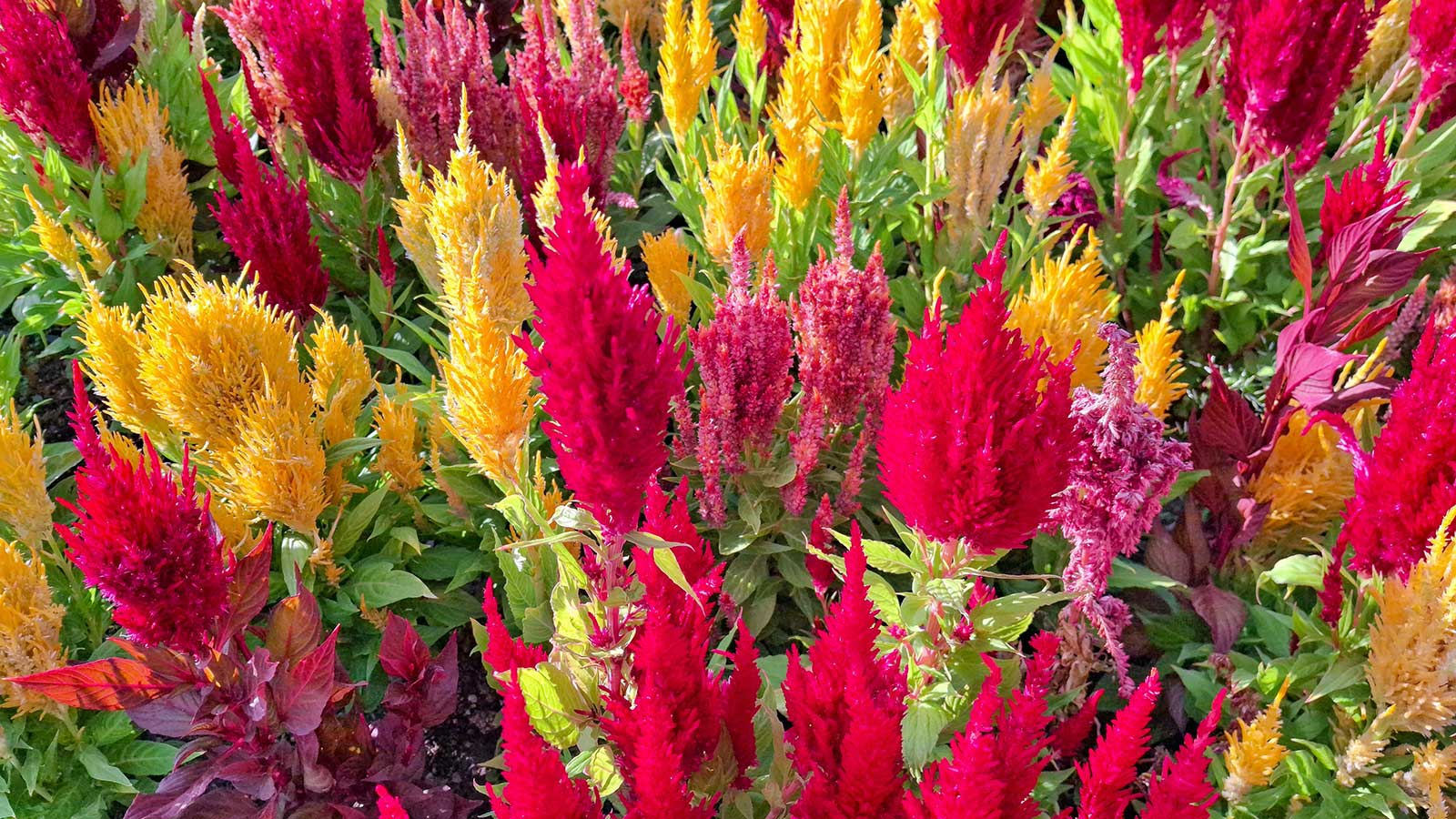
Celosia are tender plants hailing from warm climes, and give any sunny summer border a lift with their vibrant hues. With many varieties available, spanning a range of heights, some can also suit container growing.
However you decide to use celosia in your garden, choosing the right companion plants will only enhance the display. And it's not just about aesthetics – by picking plants that need similar conditions to thrive, maintenance will be straightforward, too.
Below, you'll find five top picks for planting alongside celosia, recommended by horticultural experts. There are also some practical tips on keeping them healthy and performing at their best.
1. Mandevilla

Justin Hancock, horticulturist at Costa Farms, recommends planting mandevilla alongside these vibrant plants, highlighting how they like similar growing conditions (lots of sun, regular watering, well-draining soil, and warm temperatures).
But aside from this, he also says they look great together, particularly if you're pairing mandevilla with the spike- and plume-type celosia flowers.
'Mounding mandevilla varieties have a full, bushy appearance – so the upright flower form makes for a great contrast,' he explains.
You can also do some fun color combinations, he continues, whether you want to go traditional (red-on-red or pink-on-pink) or more daring (orange-on-pink).
'Choose a spot with at least eight hours of direct sun per day; both will tolerate shade but won’t bloom as profusely and may be more susceptible to disease,' Justin continues.
'They’re both somewhat drought tolerant, so they’ll survive if you leave them alone for a weekend, but they grow and bloom best if watered regularly.
'Fertilizing with a general-purpose fertilizer also helps keep them blooming their best. A thick layer of mulch (three inches deep or so) will help keep the weeds down.' Like celosia, mandevilla plants are frost-tender.
Mandevilla live plants are available from Amazon.
2. Zinnias
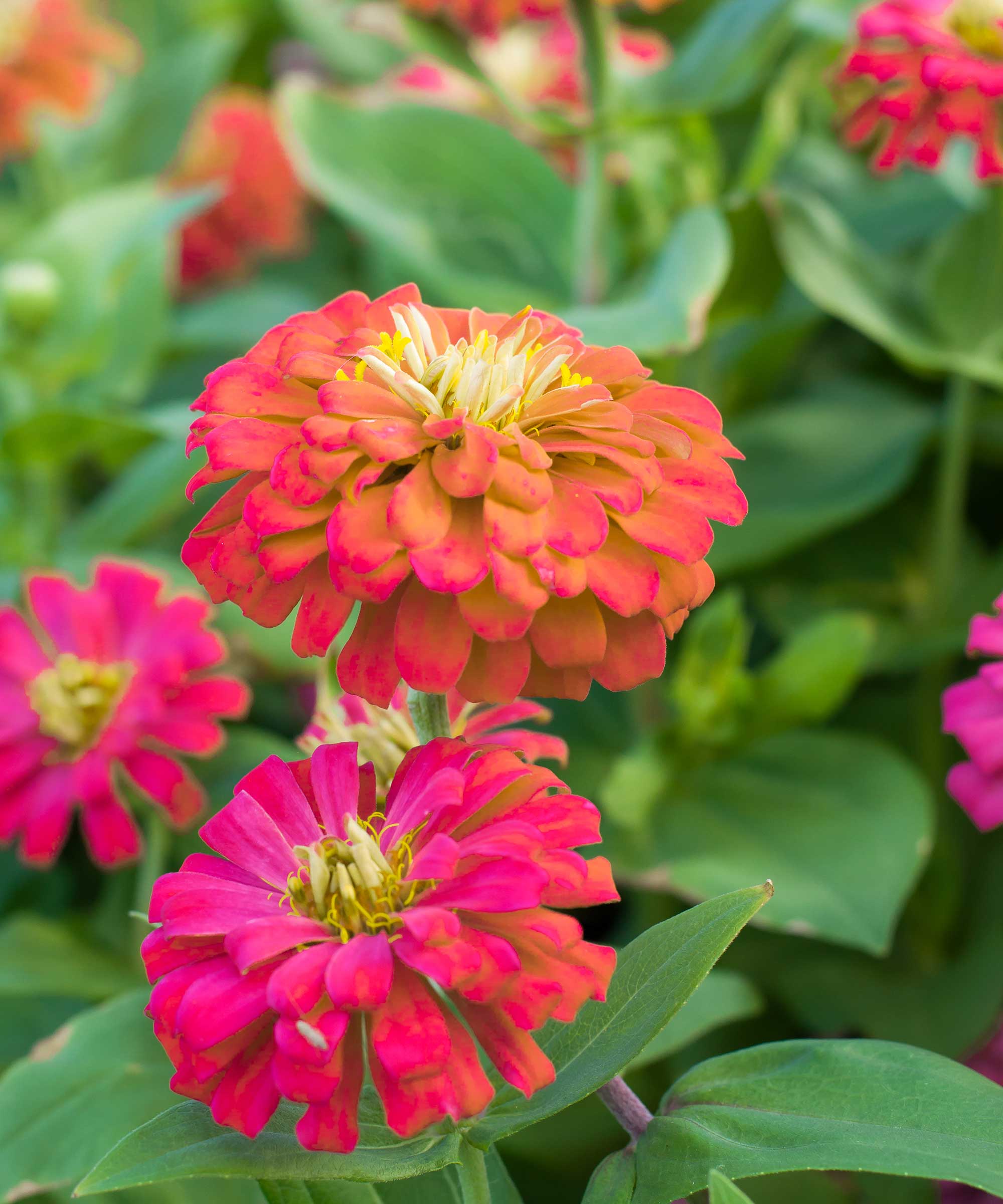
Amy Enfield, senior horticulturist at ScottsMiracle-Gro, recommends growing zinnias next to celosia, which also share a need for full sun and well-drained soil.
'They bloom in a similar array of bright, bold colors, but their different flower textures complement one another, creating eye-catching mixed borders or container plantings.
'Zinnias are pollinator magnets, particularly butterflies and bees, which benefits the entire garden,' she adds. They're also super easy to grow from seed.
In terms of care, Amy recommends deadheading them regularly to promote continuous blooming.
'Water at the base of the plant and in the morning, so the foliage has plenty of time to dry to help prevent fungal diseases like powdery mildew,' she adds.
Interested in growing these annuals in your garden? Burpee has a large range of zinnia seeds available to buy.
3. Annual vinca
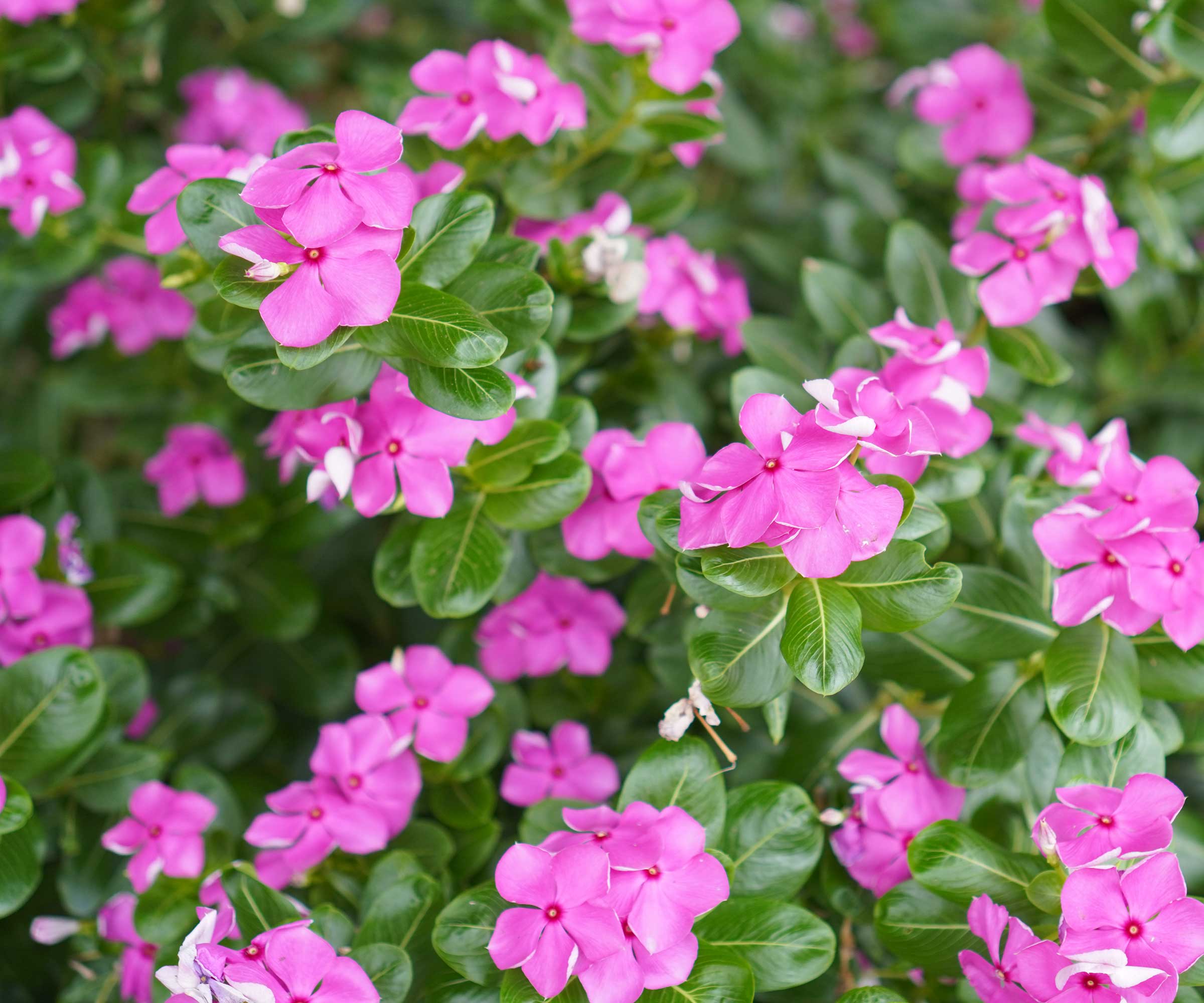
Justin also recommends annual vinca (Catharanthus) for planting alongside celosia, highlighting how both types of plants bloom in jewel-tone colors.
'The flat, plate-shaped vinca flowers offer a lovely contrast to both the spiky, plume-type or cockscomb-style celosia flowers,' he adds.
This frost-tender plant is fast-growing and easy to look after, just be sure to plant it somewhere sunny with well-draining soil.
They can be beneficial plants for pollinators, and also have good deer resistance.
4. Ageratum
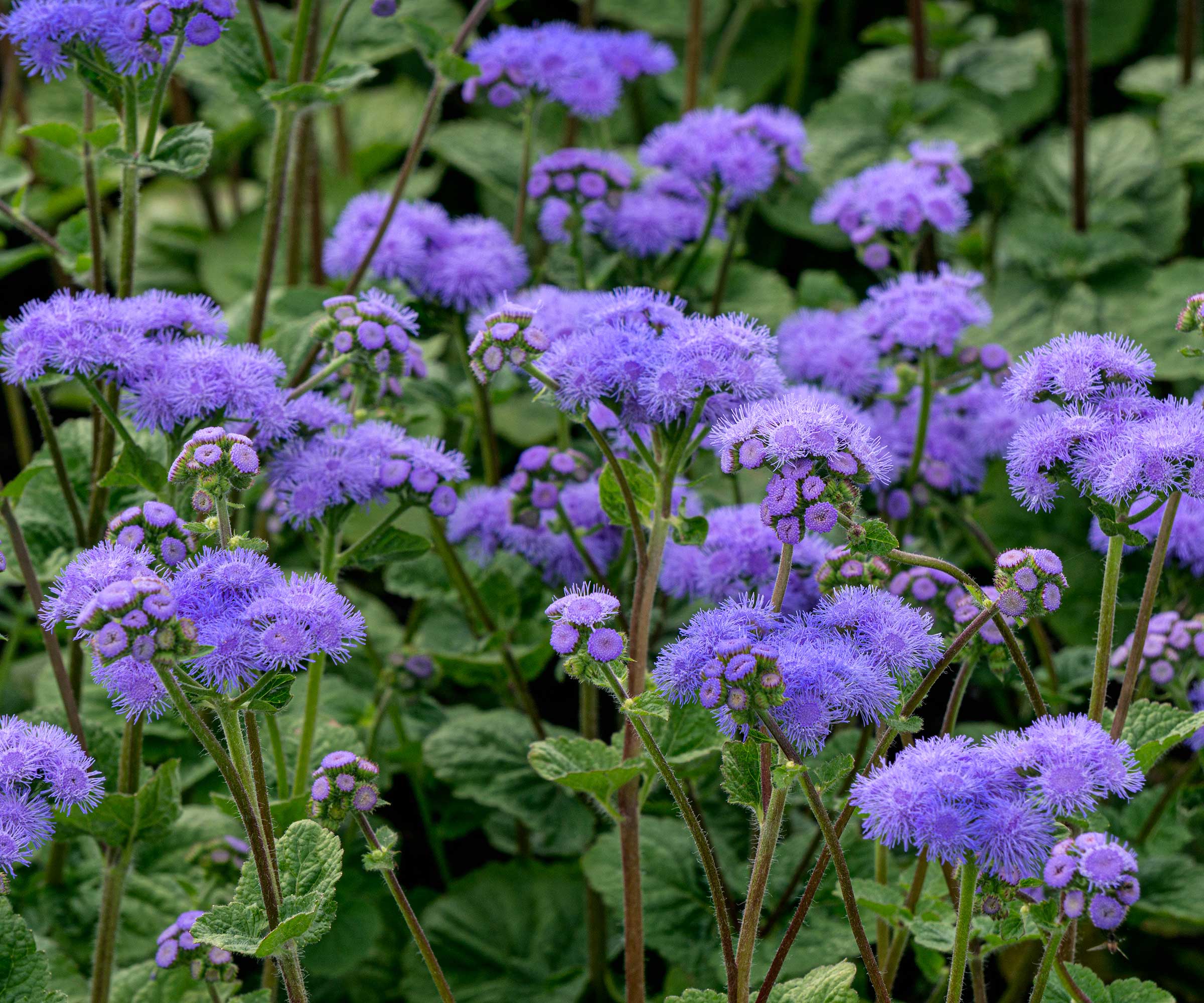
Ageratum's fluffy, powder-blue blossoms offer both a nice textural and color contrast to the bolder celosia flowers, points out Amy.
'The mounding habit of ageratum can be used to fill in or create an edge around taller celosia varieties.' Again, these plants prefer similar growing conditions, too, and are generally treated as annuals as they are frost tender.
'When ageratum plants are young, pinching the growing tip will encourage the plant to branch, resulting in a fuller, bushier habit (and usually more flowers),' she continues.
'Like celosia, ageratum does not like “wet feet” and is prone to root rot if the soil is kept too wet.'
Ageratum seeds are available from Amazon.
5. Helichrysum
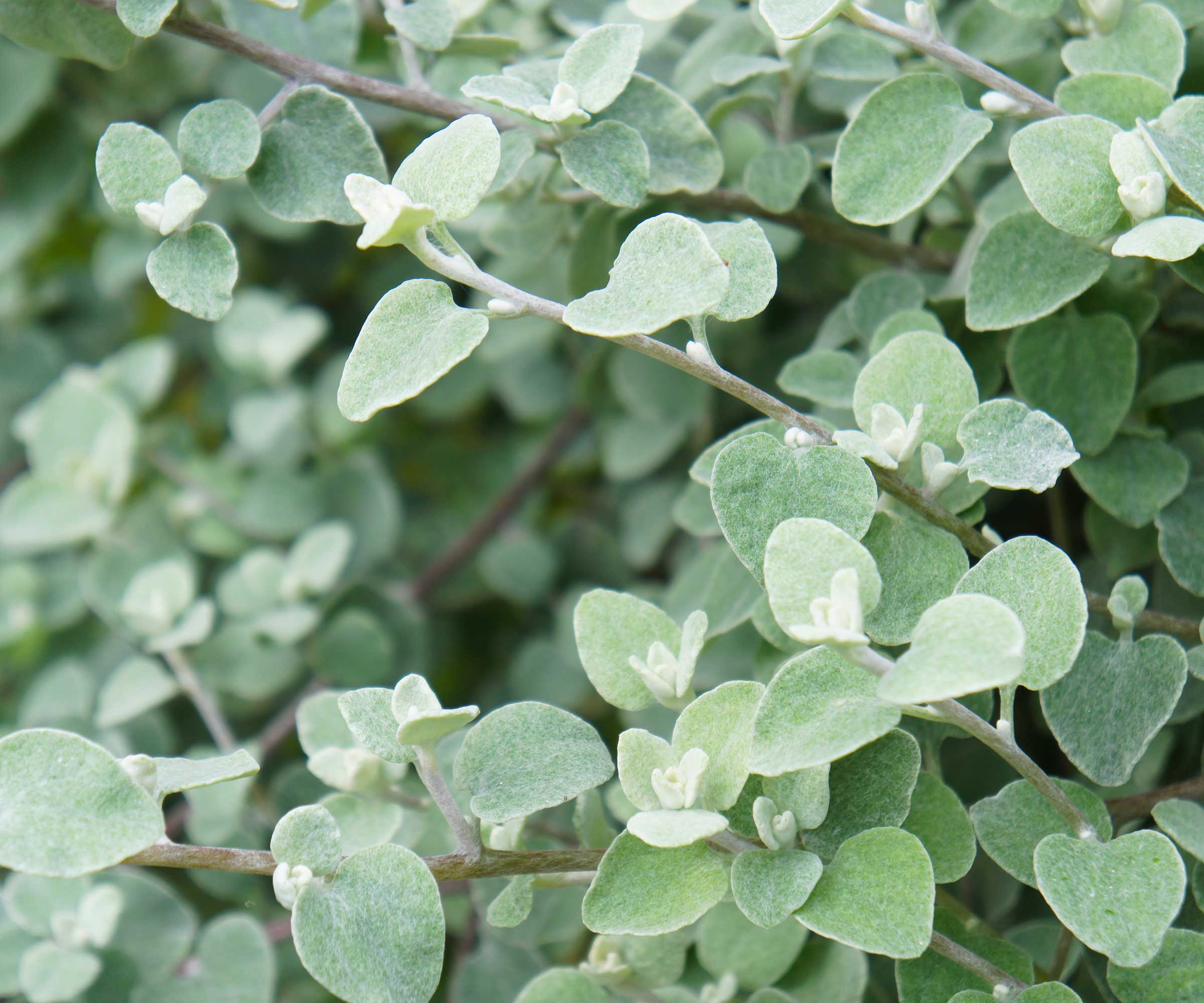
'There are several Helichrysum varieties commonly grown as annuals in the garden,' says Justin.
'They have different forms, but what they do have in common is gorgeous silver foliage.' This silver foliage looks good with anything and everything in the garden, including celosia, he adds.
Justin particularly recommends the licorice plant variety (Helichrysum petiolare) for planting in pots, so it can spill over the sides.
Meanwhile, upright varieties like 'Icicles' complement plume-type celosia selections, he adds.
'Watering regularly is helpful, but not imperative since they both have a bit of built-in drought tolerance,' he notes, adding that a well-draining soil or potting mix is important, as neither likes to be soggy.
Do note that some types of Helichrysum are regarded as invasive plants in some regions, so check if this applies to you before you plant.
FAQs
Can you plant celosia beneath shrubs or trees?
Large shrubs or trees may block the sunlight from your celosia, which won't help them perform at their best. Instead, consider some of our woodland planting recommendations, or an option from our list of plants for beneath trees, and stick to a more open site for your celosia.
How far apart should you space celosia from other plants?
Mature sizes can differ according to variety, so it's always best to check the label of your chosen plant for spacing information. In general, though, celosia should be spaced at least eight inches from other plants, so it has plenty of room to grow well.
Celosia isn't just fabulous in the garden, but it's also a favorite for cutting and using in floral arrangements indoors.
You can even dry the flowers for longer-lasting displays. And, if you're looking to bring even more flower power to your outdoor space, our guides on fast-growing flowering annuals and longest-flowering perennials are also worth a look.







